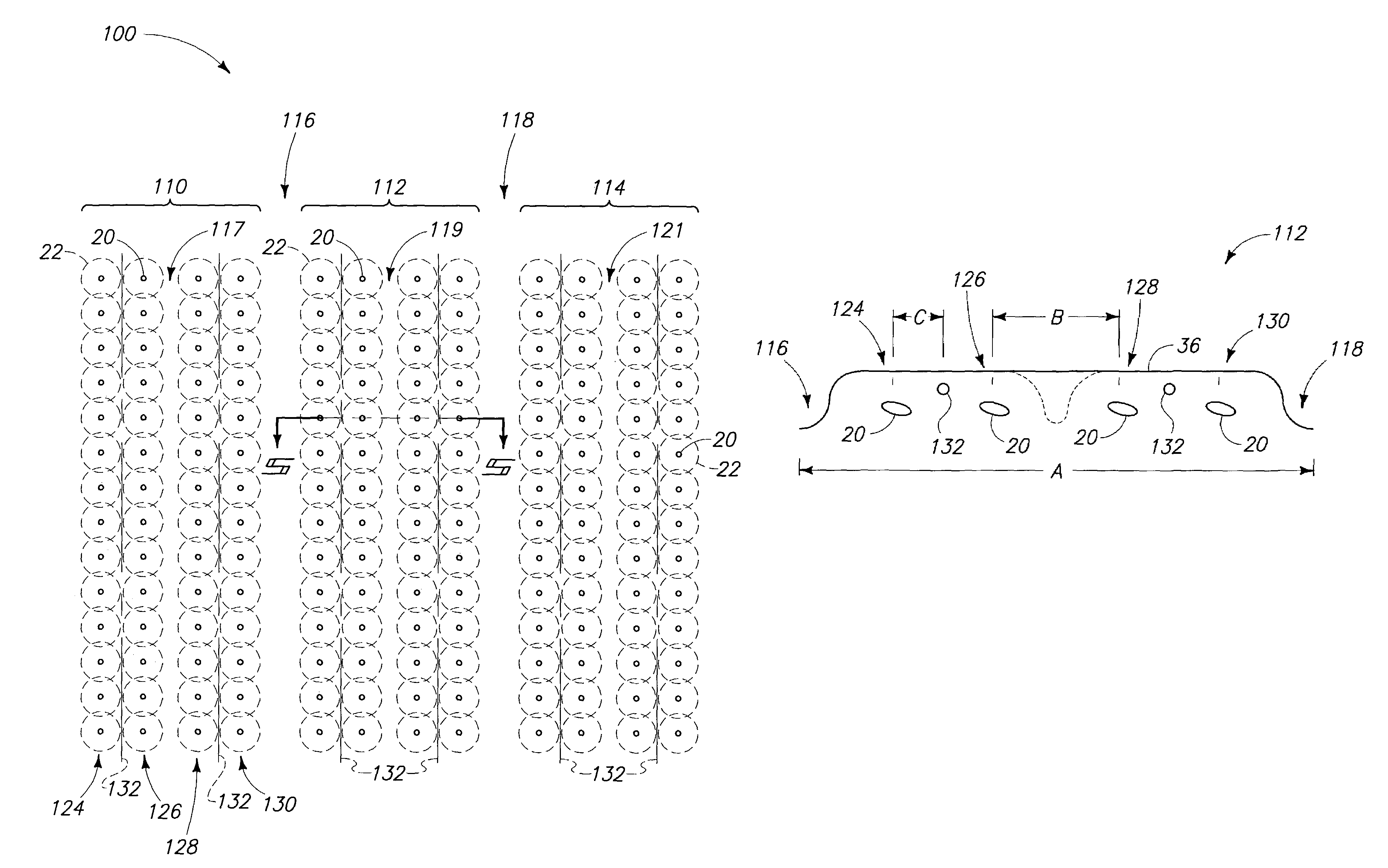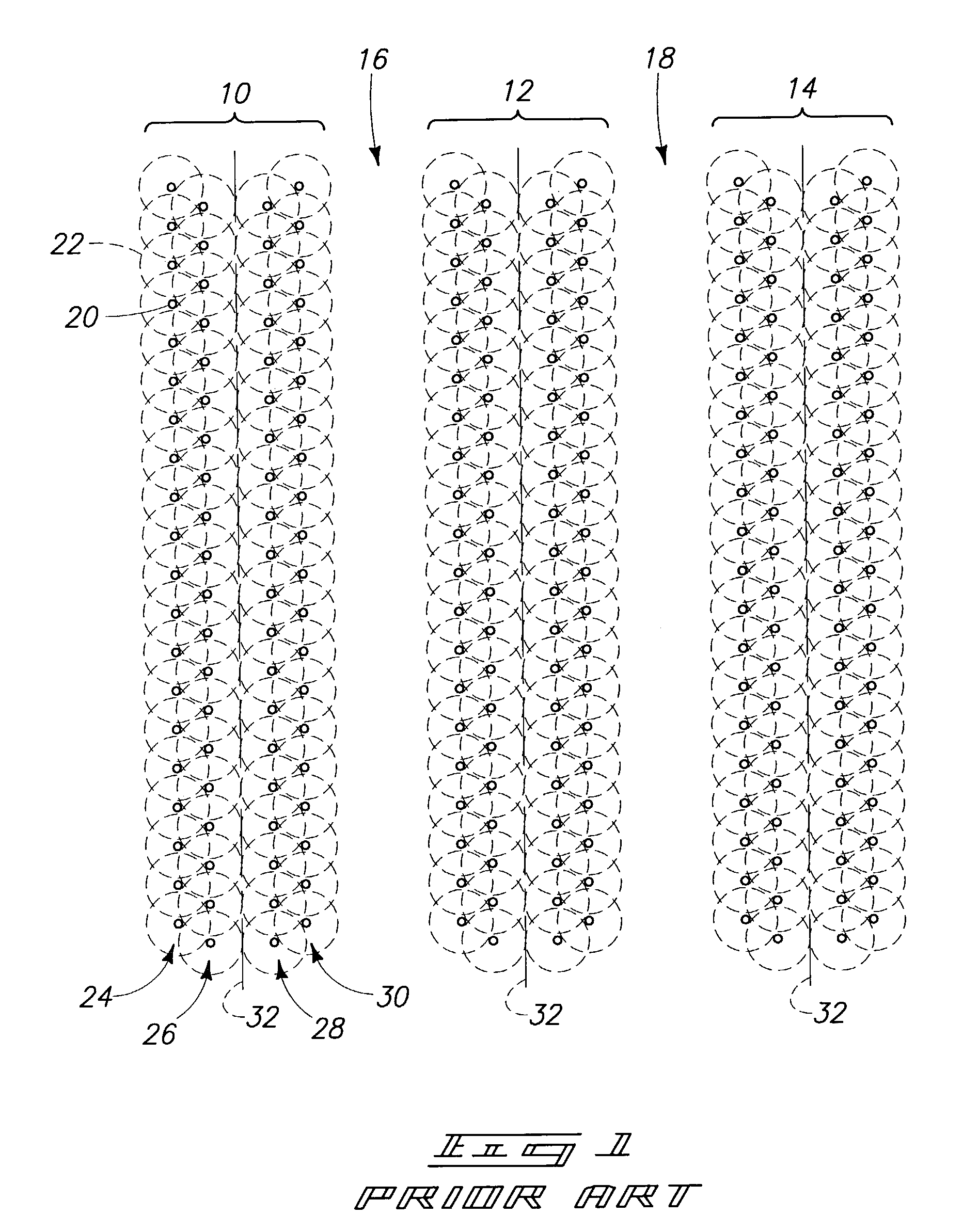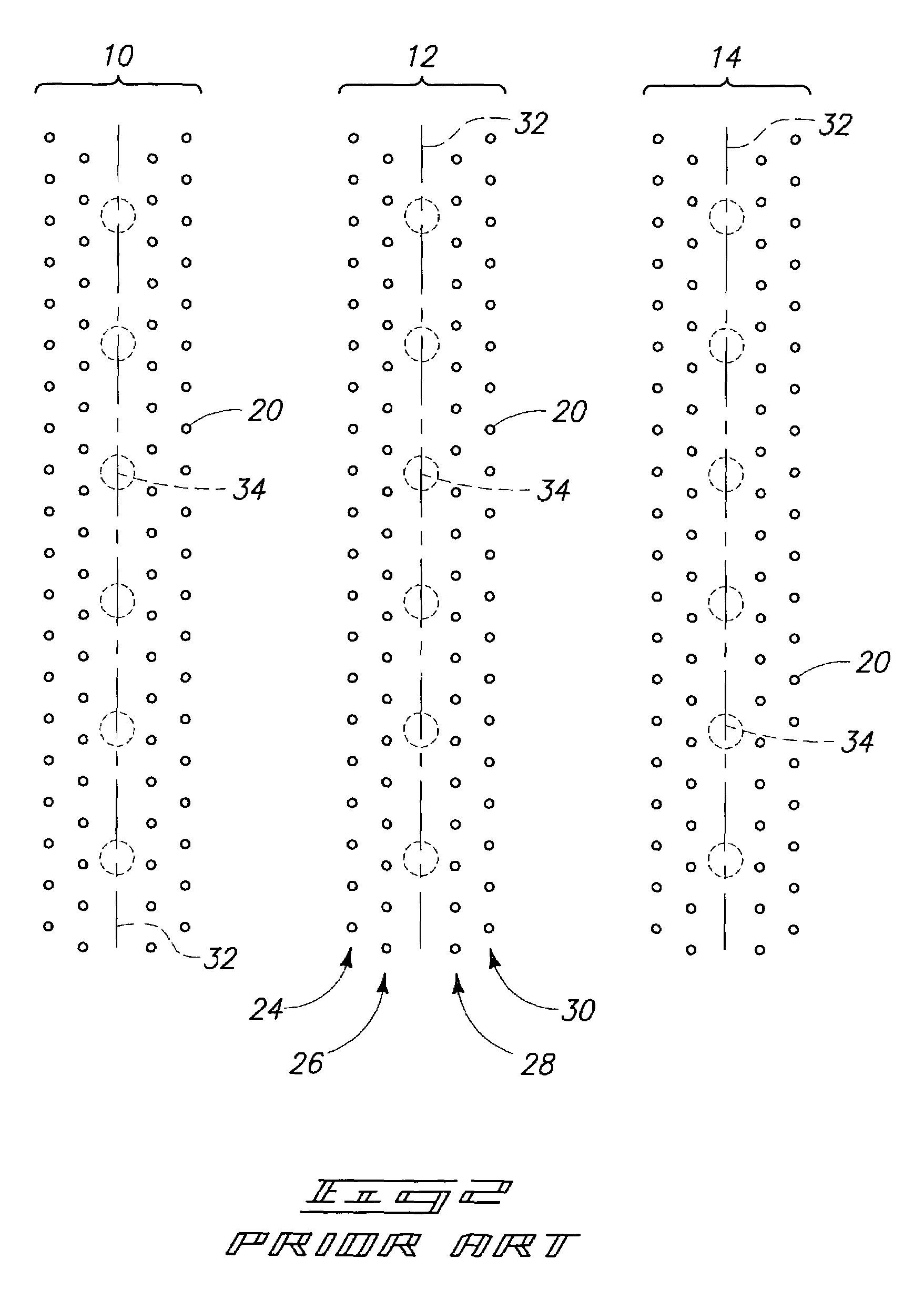Potato drip irrigation system and method
a drip irrigation and potato technology, applied in the field of plant husbandry, can solve the problems of increasing the potential for disease, reducing the quality of potatoes, and disadvantages of center-pivot irrigation systems, so as to improve the yield of potatoes, improve the growing and yield of potatoes, and reduce excessive wet conditions
- Summary
- Abstract
- Description
- Claims
- Application Information
AI Technical Summary
Benefits of technology
Problems solved by technology
Method used
Image
Examples
Embodiment Construction
[0026]This disclosure of the invention is submitted in furtherance of the constitutional purposes of the U.S. Patent Laws “to promote the progress of science and useful arts” (Article 1, Section 8).
[0027]Reference will now be made to a preferred embodiment of Applicants' invention. An exemplary implementation is described below and depicted with reference to the drawings comprising a system and method (or arrangement) for growing potato crops, as well as improving yield and quality, identified by reference numeral 100. While the invention is described by way of a preferred embodiment, it is understood that the description is not intended to limit the invention to such embodiments, but is intended to cover alternatives, equivalents, and modifications which may be broader than the embodiments, but which are included within the scope of the appended claims.
[0028]In an effort to prevent obscuring the invention at hand, only details germane to implementing the invention will be described...
PUM
 Login to View More
Login to View More Abstract
Description
Claims
Application Information
 Login to View More
Login to View More - R&D
- Intellectual Property
- Life Sciences
- Materials
- Tech Scout
- Unparalleled Data Quality
- Higher Quality Content
- 60% Fewer Hallucinations
Browse by: Latest US Patents, China's latest patents, Technical Efficacy Thesaurus, Application Domain, Technology Topic, Popular Technical Reports.
© 2025 PatSnap. All rights reserved.Legal|Privacy policy|Modern Slavery Act Transparency Statement|Sitemap|About US| Contact US: help@patsnap.com



